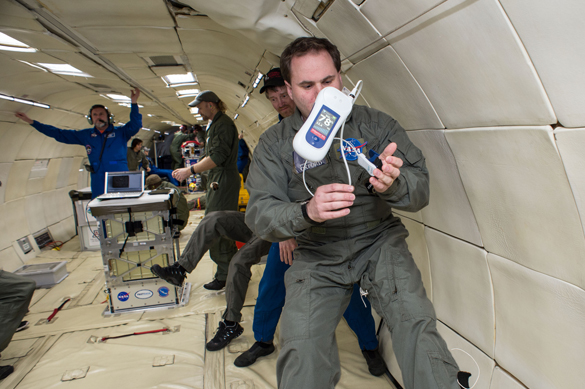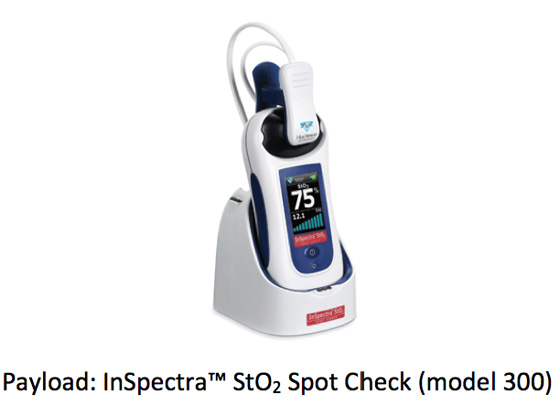Monitoring Tissue Oxygen Saturation in Microgravity
PI: Thomas Smith, University of Oxford
PI: Thomas Smith, University of Oxford

- TA06 Human Health, Life Support and Habitation Systems
On long-duration missions, loss of calcium from the bones increases both the risk of fractures and the risk of kidney stones (due to excess calcium in the blood). If tissue oxygen saturation (StO2) is indeed reduced in space, we need to know. This project aims to extend the use of commercially-available medical monitoring technology to the microgravity environment. The payload is the recently-developed InSpectraTM StO2 Spot Check (model 300), which is the only portable handheld StO2 monitor currently in clinical use (Hutchinson Technology Inc, Minnesota, USA). This well-established technology uses near-infrared spectroscopy to measure StO2 noninvasively, and is used clinically in critical care medicine.
The primary objective is to demonstrate that the technology works in microgravity. Other objectives are to formally assess basic operation of the technology in microgravity conditions, to assess ease of use and identify possible risks in the flight environment, and to generate unique clinical data by making the first measurements of StO2 in microgravity. This data would guide further maturation for use in space, and may also be beneficial for this technology’s use on Earth.
This technology could genuinely contribute to the health of astronauts on long-duration space missions, which is critical to NASA’s human spaceflight program.
The payload is expected to operate successfully in microgravity and is a good candidate for use in space: it is small, weighing only 0.4 kg (10 times less than comparable devices); it has satisfied strict licensing and approval requirements for clinical use; and the technology has been used effectively in challenging environments such as on the battlefield and during helicopter emergency medical operations.

Technology Details
-
Selection DateAFO6 (Jun 2013)
-
Program StatusCompleted
- 1 Parabolic
Development Team
-
PIThomas Smith
-
Organization
-
SponsorUniversity at Oxford, UK
-
More Information

